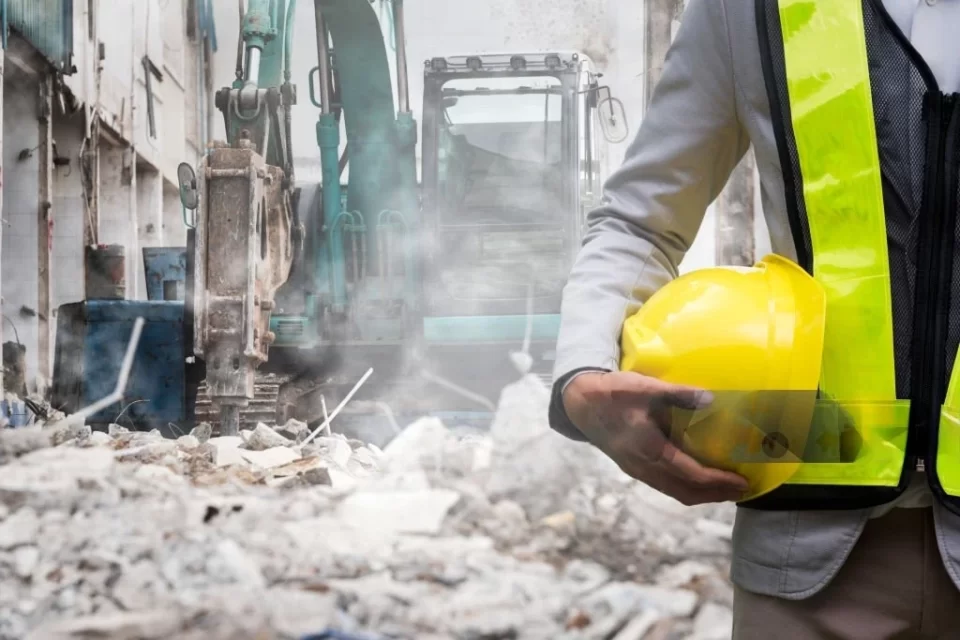Dust control is a significant concern in temporary construction sites. The dust generated can pose health risks to workers and nearby residents, disrupt local ecosystems, and contribute to environmental pollution. Implementing effective BossTek dust control measures is essential for maintaining safety, complying with regulations, and ensuring the overall success of a construction project. Dust generated on construction sites can have widespread and detrimental effects. For workers, prolonged exposure may result in more severe health conditions, such as silicosis or chronic obstructive pulmonary disease (COPD). Understanding these impacts underscores the importance of implementing robust dust control measures.
Here’s a look at strategies for addressing dust control in temporary construction sites.
Regulatory requirements and compliance
Compliance with regulatory requirements is crucial for managing dust control on construction sites. Various local, state, and federal regulations mandate specific practices to mitigate dust emissions and protect public health and the environment. These regulations often include guidelines for monitoring dust levels, implementing control measures, and maintaining records of dust management activities. Non-compliance can lead to fines, project delays, and even reputational damage. Staying informed about relevant regulations and ensuring that all dust control measures meet or exceed these standards is essential for the smooth operation of a construction project.
Implementing water-based solutions
Water-based dust control solutions are among the most common and effective methods for controlling dust on construction sites. Regularly spraying water on exposed soil and construction materials helps to keep dust particles from becoming airborne. This method is particularly effective in dry and windy conditions, which can exacerbate dust generation. However, it’s important to use water efficiently and avoid excessive application, which can lead to runoff and erosion. Using water trucks, hoses, and automated sprinkler systems can ensure even and targeted application of water, minimizing dust while conserving water resources.
Utilizing chemical dust suppressants
Chemical dust suppressants offer an alternative or complementary solution to water-based methods. These products include polymers, surfactants, and chloride compounds. Chemical dust suppressants can be applied to soil and other materials to form a crust or bind particles together, reducing dust emissions. These suppressants are particularly useful in areas where water availability is limited or where water-based methods are insufficient. Even then, choosing the right type of suppressants and following manufacturer guidelines for application is crucial for achieving optimal results and minimizing environmental impact.
Implementing physical barriers and vegetation
Physical barriers and vegetation can play a significant role in controlling dust on construction sites. Installing windbreaks, such as fences, barriers, or berms, can reduce wind speed and prevent dust from being carried off-site. These barriers can be made from materials such as wood, metal, or geotextile fabric. Additionally, establishing temporary vegetation or ground cover can help stabilize soil and reduce dust generation. Fast-growing grasses or plants can be sowed in exposed areas, providing a natural and cost-effective solution for dust control.
Monitoring and maintenance
Effective dust control requires continuous monitoring and maintenance. Regularly inspecting the site for dust levels, assessing the effectiveness of control measures, and making necessary adjustments are essential for sustained dust management. Utilizing dust monitors and visual inspections can help identify areas where dust control may be lacking. Also, maintaining records of dust control activities and monitoring results ensures that the project remains compliant with regulatory requirements and allows for timely responses to any issues that arise.
Addressing dust control in temporary construction sites is vital for protecting worker health, complying with regulations, and minimizing environmental impact. Effective dust control not only benefits the immediate construction site but also contributes to the well-being of the surrounding community and ecosystem.

